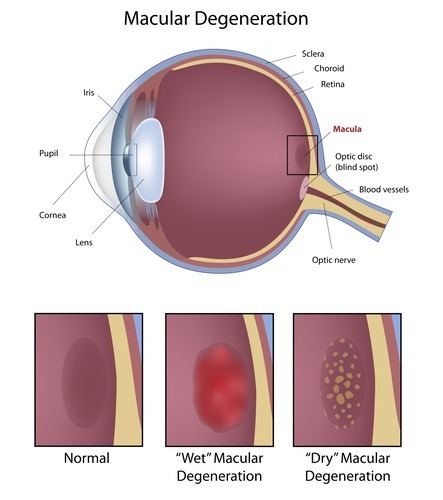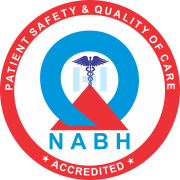Age-Related Macular Degeneration (AMD) has become a common retinal disease in most countries today due to high life expectancy. It is the leading cause of severe vision loss in the aged population. The macula is an area in the retina responsible for fine vision – colour, reading, writing, and recognition of faces.
As an individual ages, the cell metabolism changes, and organs start to deteriorate. In this process, fats that cannot be further broken down are deposited in the outermost layer of the retina. As we grow older, this fat deposition thickens, thereby damaging the Retinal pigment epithelial(RPE) cells in which they exist. These RPE cells generally act as a barrier/border between the outer and inner retinal layers in Age-Related Macular Degeneration (AMD), this border deteriorates.

Causes of Macular Degeneration
Ageing is a major risk factor for Age-related Macular Degeneration(ARMD). Other factors include smoking, high cholesterol or high blood pressure, obesity, pre-existing heart disease, etc.
Dry macular degeneration
In this initial stage, there are only deposits inside the RPE cells, this is known as dry age-related macular degeneration. This may not cause changes in your vision. But as the deposits become more significant and numerous, they might dim or distort your vision, especially when you read.
Wet Macular degeneration
In some people, as the deposition in the RPE cells increases, these cells start to break down, and the blood vessels from the choroidal layer start penetrating the inner layers of the retina. This stage is known as wet age-related macular degeneration. With further destruction of the RPE cells, other inner layers of the retina are also impacted, thereby causing more damage to the retina.
Macular degeneration treatment
With early diagnosis, the disease can be maintained with minimal treatment. As the disease progresses, the condition becomes worse and hence requires more treatment. Vision loss due to retinal problems to irreversible. So, early detection of the problem & timely intervention is very important.
The treatment is provided through injections which have to be taken at intervals as advised by the doctor.
Macular degeneration symptoms
In the early stage (dry macular degeneration), there might not be any signs. But as the condition progresses the following symptoms can be seen.
Common symptoms of macular degeneration include blurred or distorted central vision, difficulty reading or recognizing faces, decreased colour perception, straight lines appearing wavy or distorted, and the presence of blind spots or dark areas in the central vision. If you experience any of these symptoms, it is important to consult with an eye care professional for proper diagnosis and treatment.
● Worse or less clear vision – Blurry, difficult to read, distortion of vision
● Dark, blurry areas in the center of your vision.








